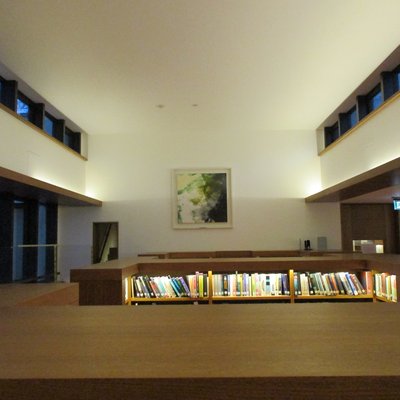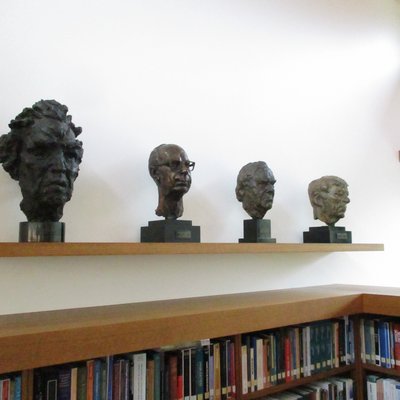AI and Poetry: Ethics, Gender, and Creativity
- Date 9 June 2023 - 3.30 p.m. - 9 June 2023 - 6.00 p.m.
- Location Mark Bedingham Room in the St John's Study Centre
Join us for a fireside chat to explore AI's incursions into poetry, from the ethical concerns to the artistic affordances. We will consider the ability for AI to produce gendered creations, the possibility of outsourcing creativity to machines, the productivity of failure, and AI's capacity to help cure writer's block.
This talk is inspired by the gift of a painted work given to St John's College. This piece, entitled Shattered Space, was created by the humanoid AI robot, Ai-Da, who is now being programmed to produce poetry. Shattered Space is currently displayed in conversation with four busts of St John's College's famous literary alumni: Philip Larkin, Robert Graves, John Wain, and Seamus Heaney. What can we draw from the 'conversation' initiated by this method of display?
Our exploration will be guided by poet and PhD candidate Janel Pineda (Marshall 2019), Lecturer in Creative Writing and poet Christina Thatcher (Marshall 2009), and DPhil candidate and Alan Turing Institute researcher Hannah Rose Kirk.
This event will take place in the Mark Bedingham Room in the St John's Study Centre. We will follow our discussion with a wine reception in the beautiful Canterbury Quad.
This is an event hosted by The Arts at St John's College, Oxford in partnership with the Association of Marshall Scholars is also a part of the Artful Intelligence Season and is brought to you in partnership with TORCH, the Institute for Ethics in AI and the Humanities Cultural Programme, one of the founding stones for the future Stephen A. Schwarzman Centre for the Humanities.
Organiser: Olivia Holder (Marshall 2020) arts@sjc.ox.ac.uk

Image Credit: Rens Dimmendaal & Johann Siemens / Better Images of AI / Decision Tree / CC-BY 4.0
ALT Text: "A window of three images. On the right is a photo of a big tree in a green field in a field of grass and a bright blue sky. The two on the left are simplifications created based on a decision tree algorithm. The work illustrates a popular type of machine learning model: the decision tree. Decision trees work by splitting the population into ever smaller segments. I try to give people an intuitive understanding of the algorithm. I also want to show that models are simplifications of reality, but can still be useful, or in this case visually pleasing. To create this I trained a model to predict pixel colour values, based on an original photograph of a tree."

